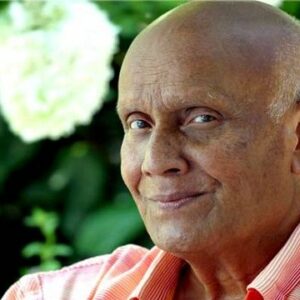Sri Chinmoy, also known as Chinmoy Kumar Ghose, was an Indian spiritual leader who believed that meditation and athleticism might lead to inner tranquility and spiritual accomplishment. The guru was born in East Bengal and later moved to New York City, where he opened meditation centers and offered spirituality lectures. He was a prolific writer, poet, and musician who gave free musical performances. He promoted the theory of’self-transcendence,’ in which a person can transcend the constraints of his mind by expanding his consciousness. He was continuously emphasizing the need of physical activity in maintaining excellent bodily and mental health, which is necessary for spiritual growth. He organized a variety of sports events, including running, swimming, and cycling; he was particularly fond of running and continued to run until he was well into his sixties. He was a talented musician who recommended other musicians to steer clear of booze and drugs and instead pursue a spiritual path through music and poetry. He taught his disciples that by practicing unconditional love, dedication, and surrender, they may achieve high spiritual heights. Despite his Hindu upbringing, he encouraged interfaith cooperation since he believed that “Love of God” was the only authentic religion.
Childhood and Adolescence
Shashi Kumar Ghose and Yogamaya had seven children, and he was the youngest among them. His father worked as a railway inspector before opening a small bank in Chittagong.
In 1943, his father died, and his mother died a few months later. He was orphaned when he was 12 years old and enrolled in the Sri Aurobindo Ashram in Puducherry in 1944.
He immersed himself in spiritual practice while also studying Bengali and English literature. He stayed at the ashram for nearly two decades, working in the ashram’s cottage industries while practicing spirituality and meditation. During this time, he also developed as an athlete.
At the age of 32, he traveled to the United States to impart the teachings of India with a wider global audience. He got a job in the Indian embassy and had a lot of help from his coworkers.
He began giving Hinduism presentations and was quickly invited to speak at universities. He eventually began giving speeches at the United Nations.
In 1968, he embarked on his first lecture tour, speaking at Oxford, Cambridge, Harvard, and Princeton universities. In 1974, he spoke at universities in all fifty states of the United States.
During the 1970s, he became quite well-known, and crowds began to gather to hear him speak. He was a musician himself, and he counseled western musicians to avoid drugs and alcohol and live a healthy lifestyle. He influenced a number of musicians, including Santana, Narada, and Roberta Flack.
In the 1970s, he was named director of the United States Meditation Group at the United Nations headquarters in New York. U Thant, the then-secretary general of the United Nations, had invited him to teach meditation there.
He held twice-weekly meditation classes for delegates and staff members at the United Nations. He hoped that his work at the United Nations would help to bring peace and understanding to the world’s nations. He was a world traveler who was described as a peace ambassador who promoted international unity.
He founded meditation centers around the world and also performed music. He promoted the theory of self-transcendence, which states that through expanding one’s consciousness, one can overcome the mind’s perceived limitations.
He thought that athletic pursuits, particularly running, can help people grow spiritually. In 1977, the Sri Chinmoy Marathon Team was formed. Running, swimming, and cycling contests are held all around the world by the team.
Despite being raised in the Hindu faith, he believed that the only true religion was “Love of God.” He was a proponent of interfaith harmony and appreciated all world religions. He was invited to open the Parliament of the World’s Religions in Chicago in 1993 as a result of this.
In 1974, he began painting. Several of his works can be found in the Victoria and Albert Museum, the UNESCO Headquarters and offices, and the Louvre in Paris.
He was a gifted musician who had written thousands of tunes with Bengali and English lyrics. He has also released a meditation album called ‘Music for Meditation.’ He performed several free concerts around the world.
Major Projects of Sri Chinmoy
He preached world peace and harmony via unconditional love, dedication, and surrender as a spiritual leader. He was a prolific author, poet, and musician who believed that creative endeavors and athletic activities might help people attain greater spiritual heights.
Achievements and Awards
In 1994, he and Martin Luther King’s wife Coretta Scott King received the Mahatma Gandhi Universal Harmony Award from the American division of the Indian cultural institute Bharatiya Vidya Bhavan.
In 1998, the ‘International Center of Assisi for Peace among Peoples’ awarded him the Pilgrim of Peace honor.
Personal History and Legacy
Many of his relatives were connected with the Sri Aurobindo Ashram, including his elder brothers Hriday and Chitta, where he began his spiritual journey.
At the age of 76, he died of a heart attack in 2007.
Estimated Net Worth
The Estimated net worth of Sri Chinmoy is around $1.5 million.


